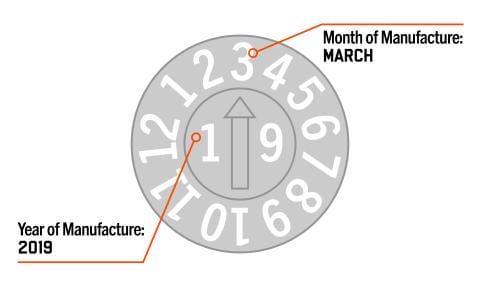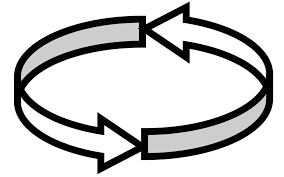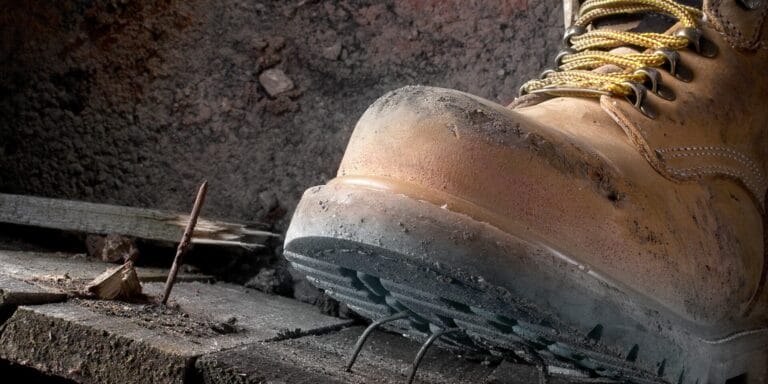In the world of safety, hard hats have always stood as a symbol of protection, shielding workers from potential head injuries in hazardous environments. As a crucial component of personal protective equipment (PPE), hard hats come in various classifications, types, colors, and materials each serving a specific purpose. If you are someone whose industry requires you to wear protective headgear, knowing these things is a must.
The standards for hard hats, including their types and classifications, are set by the American National Standards Institute (ANSI). Specifically, the ANSI/ISEA Z89.1 standard outlines the requirements for industrial head protection. This standard provides guidelines for the design, testing, and performance, ensuring that they meet specific criteria for impact resistance, penetration resistance, and electrical insulation.
Each hard hat is required to have markings that indicate compliance with these safety standards. These markings may include information about the manufacturer and the hat’s class and type. It’s like the identification badge that assures your hard hat will hold up in your workplace.
Why is this important? Well, it’s crucial for manufacturers to display this information so users are well informed when they are buying the appropriate equipment for their environment. Otherwise, how else would anybody know which hard hat to pick. Following these standards ensures your hard hat is as effective as possible when you are on the job.
ANSI Hard Hat Types & Classes
Hard hats are classified based on their ability to provide protection against different types of hazards. The two primary classifications are Type I and Type II. Type I hard hats are designed to protect against impacts to the top of the head whereas Type II offers additional protection against side impact. These are ideal for environments where workers are exposed to lateral impact, such as those in the utility and mining industries.
Beyond the classifications, hard hats come in various types, each tailored to specific work environments. Class E is for Electrical. Designed to protect against shocks and burns up to 20,000 volts, these are more commonly used in the utility industries. Any hard hat that is labeled Class G, is typically for General use. It provides protection against impacts and limited voltage exposure up to 2,200 volts, making it versatile and suitable for a wide range of industries. Lastly, there’s Class C, which stands for Conductive. These offer no electrical protection and primarily focus on impact protection instead.
Identifying Employee Personnel by Color
According to OSHA’s regulations (29 CFR 1910.135), employers must ensure that their employees wear head protection that meets the ANSI Z89.1 standard. While ANSI Z89.1 specifies performance requirements, it doesn’t necessarily dictate specific colors for different purposes. Instead, the color is often determined by the employer or the company’s safety policy and typically play a huge role in identifying the roles and responsibilities of different crew members. While color codes may vary, some common industry standards include the following.
White: Supervisors, engineers, and managers.
Yellow: General laborers and earth-moving operators.
Blue: Electricians and other technical roles.
Green: Safety inspectors and environmental health personnel.
Orange: Road crews and workers near moving equipment.
Brown: Welders and those involved in high-heat applications.
How Personalization Compromises Safety
While decorating a hard hat with paint or stickers may seem like a personal touch and trend across the industry, it potentially compromises the structural integrity and protective capabilities of this essential safety gear. Although stickers may pose a lesser risk compared to paint, safety managers often caution against both practices. Paint, when applied in excess or in a manner that conceals the hard hat’s defects or color, may compromise its ability to absorb impact and protect the wearer in the event of a fall or impact. Hard hat safety markings serve as crucial indicators of the helmet’s compliance with safety standards. Applying additional stickers might obstruct these important labels, making it difficult to identify the hats class, type, and other manufacturing details.
Identifying Safety Markings
Speaking of manufacturing details, when you flip your hard hat over, you will find a small clock-looking marking typically found under the brim. Many may think that this identifies the expiration, but this is in fact the manufacturing date. Unlike many other PPE items with a predefined expiration, hard hats don’t have specific expiration dates. In order to read this and determine your hard hat’s lifespan, look at the number in the middle that is split by the arrow. That number will tell you the year. The number that the arrowing is pointing to, will let you know the month it was produced.

While there is no exact expiration date, it is imperative to monitor them for any visible signs of wear and tear, such as cracks, dents, or fading. Once a hard hat exhibits these indications of compromise, you should retire it from service immediately. Just because they generally have a lifespan of 3 to 5 years, does not mean that it will last all 3 to 5 years. Think about the number of times you’ve dropped it, or it did its job in protecting you. Think about where you store your hard hat as this can also affect its durability. In theory, the moment it gets used or it has endured some impact, is when it qualifies to be replaced.
In recent years it has become a huge trend amongst workers to wear their hard hats backwards, but unless the manufacturer clearly states that this is ok, you are running a risk by doing this. Remember the point of your hard hat is to protect you. So be sure to check for the reverse donning symbol, which resembles a 2 arrow recycle symbol, before you turn your hard hat backwards. Similar to the manufacturing date, this symbol can be found under the brim.

Over time, hard hats have emerged instrumental in reducing worker fatalities by approximately two-thirds since OSHA’s implementation of rules in 1970. The key today in choosing the perfect hard hat is to understand the classifications, types, color codes, and essential guidelines. With ongoing innovations in design and materials, the future promises even more advanced features to enhance the overall safety and comfort of workers across diverse industries. Work Wear Safety remains committed to providing the latest and most reliable information to ensure that workers are Safer, Happier, and more Productive on the job.





